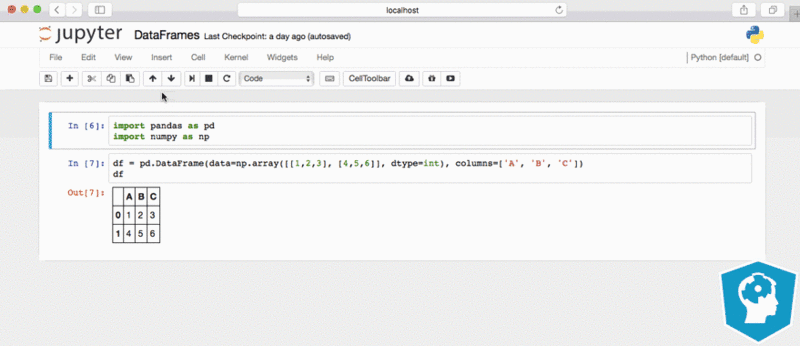The jupyter notebook is available for download here. The intention is for it to be run on your free UToronto syzygy server or your free UCalgary syzygy server. The document can be read on Github, but on Syzygy it can be interacted with.
LaTeX (pronounced "Lay-Tech" or "Laa-Tech" ) is a computer language used by mathematicians and physicists to nicely format mathematical expressions. Every math student will eventually need to know how to write in LaTeX, since all math journals are written using LaTeX. It is also used in every online platform that supports math writting, such as D2L discussion posts, Github, Wordpress blogs, Piazza, and Mathoverflow.
Jupyter notebooks are a file type that blends HTML, formatted text (markdown), formatted mathematical formulas (LaTeX) and runnable code (Python). It is the standard way that data scientists communicate with each other online.
Source: https://www.datacamp.com/community/tutorials/tutorial-jupyter-notebook
My resource is an interactive guide to properly typing LaTeX. The format is a Jupyter notebook which is an authentic way in which LaTeX is used by data scientists. The resource could be used in any first-year course at the University of Calgary that requires written mathematics (such as MATH 265 - Calculus 1 or MATH 311 - Linear Algebra 2). The examples are geared towards students in those courses.
This was designed to be used as a resource outside of class that students could use whenever they want, as often as they want. In this sense it is a "flipped or blended" resource [3]. The nature of a jupyter notebook (it's a fancy text file) means that students necessarily must download their own version of it and edit it as they go. This encourages them to personalize the material and take ownership of it. They can even modify the examples in the text instantly see how it changes the outcome.
In the SAMR model [2] this is firmly in the "Redefinition" category, as the Jupyter notebook simultaneously acts as information, scratch pad, code compiler, notebook, and authentic outcome. In addition, completing the exercises in a Jupyter notebook is an authentic use of the skill being trained.
The main driver of solid pedagogical underpinnings is the Universal Design guidelines [1]. There I used all nine principles to make the resource more robust and drive student learning in many different, but natural, ways. In particular, the resource is low in passive learning, and high in active learning. Each section is a couple sentences, some examples, then right into activities. The activities are of use to a student in a first year math class, and many additional, alternative explanations are offered. See my activity design post for more discussion about this.
- CAST (2018). Universal Design for Learning Guidelines version 2.2. Retrieved from http://udlguidelines.cast.org
- Hamilton, Erica R., Joshua M. Rosenberg, and Mete Akcaoglu. "The substitution augmentation modification redefinition (SAMR) model: A critical review and suggestions for its use." TechTrends 60.5 (2016): 433-441.
- Kelly, Patrick, and Isabelle Barette-Ng. "Small FLICS to Big Flips: A Step-by-Step Guide to Flipping Your Classroom." (2015). https://prism.ucalgary.ca/handle/1880/50856



